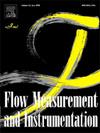Simulation analysis and experimental research on static performance of water-hydraulic pressure difference control valve
IF 2.7
3区 工程技术
Q2 ENGINEERING, MECHANICAL
引用次数: 0
Abstract
Many hydraulic tools, like hydraulic cylinders and hydraulic artificial muscle joints are operated by adjusting pressure differences between different zones. Typically, the method employed to change the pressure difference is establishing hydraulic bridges and adjusting liquid resistance. While effective, this method's drawback is complex structures. To address this issue, a water-hydraulic pressure difference control valve, integrating two hydraulic bridges, was designed. The static performances including the output pressure difference, the flow rate and the force acting on the valve core were analyzed using AMESim and computational fluid dynamics simulations. Based on the simulation results, a prototype of voice coil motor direct drive pressure difference control valve was manufactured and the corresponding experiments were carried out. The computational fluid dynamics simulation results show that the internal leakage and the through-flow capacity difference between throttling grooves affect the flow field characteristics of the valve. When the pump pressure is 3 MPa and the valve opening is at the middle position, the internal leakage increases the flow rate from 2.25 L/min to 2.38 L/min, and the through-flow capacity difference reduces the control port pressure from the theoretical analysis of 1.5 MPa–1.41 MPa. Furthermore, combined with the analysis of the external liquid resistance, the AMESim model of the pressure difference control valve is modified. When the pump pressure is 3 MPa, the pressure difference and flow rate average deviations between the modified AMESim model and the experiment are 0.021 MPa and 0.048 L/min. Finally, a rotational angle experiment for a water hydraulic artificial muscle joints showed satisfactory control effects, suggesting the valve's application in controlling hydraulic tools and actuators.
水液压压差控制阀静态性能的仿真分析与实验研究
许多液压工具,如液压缸和液压人工肌肉接头,都是通过调节不同区域之间的压力差来操作的。通常,改变压力差的方法是建立液压桥和调节液体阻力。这种方法虽然有效,但缺点是结构复杂。为了解决这个问题,我们设计了一种集成了两个液压桥的水液压压差控制阀。利用 AMESim 和计算流体动力学仿真分析了输出压差、流量和作用在阀芯上的力等静态性能。根据仿真结果,制造了音圈电机直接驱动压差控制阀的原型,并进行了相应的实验。计算流体动力学仿真结果表明,内部泄漏和节流槽之间的通流能力差会影响阀门的流场特性。当泵压为 3 MPa,阀门开度处于中间位置时,内泄漏使流量从 2.25 L/min 增加到 2.38 L/min,而通流能力差使控制口压力从理论分析的 1.5 MPa-1.41 MPa 降低。此外,结合对外部液体阻力的分析,对压差控制阀的 AMESim 模型进行了修改。当泵压为 3 MPa 时,修改后的 AMESim 模型与实验的压差和流量平均偏差分别为 0.021 MPa 和 0.048 L/min。最后,水液压人工肌肉关节的旋转角度实验显示了令人满意的控制效果,表明该阀可用于控制液压工具和执行器。
本文章由计算机程序翻译,如有差异,请以英文原文为准。
求助全文
约1分钟内获得全文
求助全文
来源期刊

Flow Measurement and Instrumentation
工程技术-工程:机械
CiteScore
4.30
自引率
13.60%
发文量
123
审稿时长
6 months
期刊介绍:
Flow Measurement and Instrumentation is dedicated to disseminating the latest research results on all aspects of flow measurement, in both closed conduits and open channels. The design of flow measurement systems involves a wide variety of multidisciplinary activities including modelling the flow sensor, the fluid flow and the sensor/fluid interactions through the use of computation techniques; the development of advanced transducer systems and their associated signal processing and the laboratory and field assessment of the overall system under ideal and disturbed conditions.
FMI is the essential forum for critical information exchange, and contributions are particularly encouraged in the following areas of interest:
Modelling: the application of mathematical and computational modelling to the interaction of fluid dynamics with flowmeters, including flowmeter behaviour, improved flowmeter design and installation problems. Application of CAD/CAE techniques to flowmeter modelling are eligible.
Design and development: the detailed design of the flowmeter head and/or signal processing aspects of novel flowmeters. Emphasis is given to papers identifying new sensor configurations, multisensor flow measurement systems, non-intrusive flow metering techniques and the application of microelectronic techniques in smart or intelligent systems.
Calibration techniques: including descriptions of new or existing calibration facilities and techniques, calibration data from different flowmeter types, and calibration intercomparison data from different laboratories.
Installation effect data: dealing with the effects of non-ideal flow conditions on flowmeters. Papers combining a theoretical understanding of flowmeter behaviour with experimental work are particularly welcome.
 求助内容:
求助内容: 应助结果提醒方式:
应助结果提醒方式:


